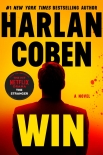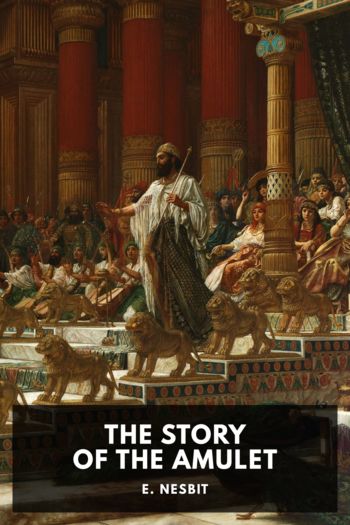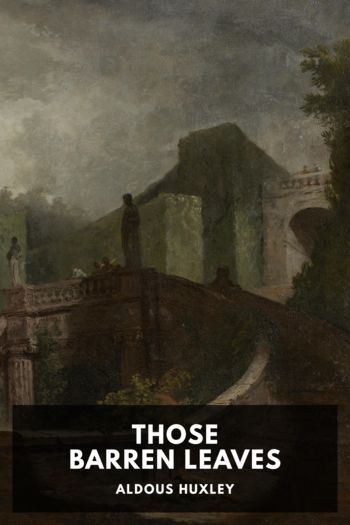WIN, Coben, Harlan [ebook and pdf reader .txt] 📗

Book online «WIN, Coben, Harlan [ebook and pdf reader .txt] 📗». Author Coben, Harlan
“We’re almost there,” he tells me.
The lake is gorgeous, serene, still, almost too still, not the slightest ripple. The blue sky reflects off it in a perfect mirror. Calvin Sinclair stops for a moment, sucks in a deep breath, and then says, “Over here.”
There is a wooden bench so rustic that it still has bark on it. It faces the lake, but more to the point, it faces a small tombstone. I approach it and read the carving:
IN MEMORY OF
R.L.
“LIFE IS NOT FOREVER. LOVE IS.”
BORN JANUARY 8, 1952—DIED JUNE 15, 2011
“Lung cancer,” Calvin Sinclair tells me. “And no, he never smoked. We found out in March of that year. He was dead less than three months later.”
I stare at the tombstone. “He’s buried here?”
“No. This is where I spread his ashes. The congregation built the bench and memorial.”
“Did the congregation know you two were lovers?”
“It’s not like we made a big thing of it,” he says. “You have to understand. When we fell in love in the seventies, being gay wasn’t accepted in the slightest. Between hiding his real identity and our orientation, we were used to being deceptive. We lived our whole lives that way.” Calvin Sinclair puts his hand to his chin, his eyes gazing upward. “But by the end, yes, I think a lot of the congregation knew. Or maybe that’s wishful thinking.”
I look at the lake. I try to picture it—Arlo Sugarman starting his life as a Jewish kid from Brooklyn and ending up here, in the woods behind this church. I almost see it as a film montage complete with melodramatic score.
“Why didn’t you ever say anything?” I ask.
“I thought about it. I mean, he was dead. No one could hurt him anymore.”
“So?”
“So I’m not dead. I harbored a fugitive. You tell me: How do you think the FBI would feel about that?”
He has a point.
“There is one more thing,” Sinclair says, “but I doubt you’ll believe me.”
I turn to him. “Try me.”
“Arlo didn’t want to kill that agent.”
“Well, yes, I’m sure that’s true.”
“But that agent,” he continues. “He shot first.”
A cold trickle slithers down my back. I want to ask for him to elaborate, but I don’t want to lead him either. So I wait.
“Special Agent O’Malley came in through the back door. Alone. Without a partner. Without backup. He didn’t give Arlo a chance to surrender. He just fired.” He tilts his head. “Have you ever seen old photographs of Arlo?”
I nod numbly.
“He had that huge Afro back then. The bullet, Arlo told me, traveled right through it. Literally parted his hair. Then—and only then—did Arlo fire back.”
Two conversations echo and then ricochet through my head.
First, Leo Staunch’s words about his uncle came back to me:
“He made it very clear that anyone who gave us information on any of the Jane Street Six—or heck, could prove he killed one—would be richly rewarded.”
Second, my conversation with PT when this all began:
“We only sent two agents to the brownstone.”
“No backup?”
“No.”
“Should have waited.”
Why hadn’t they waited for backup?
The answer seems fairly clear now.
Without another word, I turn and start back down the path.
I know it all now. Leo Staunch had hinted as much to me. He told me when I found Arlo Sugarman, I would find all my answers. He was right, I realize. In terms of the Jane Street Six, there is still a bit of cleanup work to do, but I came here for answers and now I have them.
Calvin Sinclair calls after me. “Win?”
I don’t stop.
“Are you going to tell?” he calls out.
But I still don’t stop.
CHAPTER 31
Back on the jet, I get three calls.
The first I see incoming is from PT. I don’t want to talk to him quite yet, not when I’m so close to the end game, and so I let it go into the voicemail. This will no doubt displease PT, who will quickly deduce that I am avoiding him, but I can live with that.
The second call is from Kabir.
“Articulate,” I say, opening up the browser on my laptop. Kabir will normally email me all relevant backing documentation because, again, like my daughter, I am visual.
But his reply catches me off guard: “I have Pierre-Emmanuel Claux on the line. He sounds upset.”
It takes me a second to remember the name of the art curator and restorer whom I had insisted the FBI use to authenticate and tenderly care for the family’s Vermeer. I tell Kabir to patch the call through.
“Mr. Lockwood?”
“Speaking?”
“This is Pierre-Emmanuel Claux at the Institute of Fine Arts at NYU.” I hear the muffled panic in his tone. “You asked me to look into a painting the FBI recently located for authentication and condition purposes—The Girl at the Piano by Johannes Vermeer.”
“Yes, of course.”
“When can you get to the institute, Mr. Lockwood?”
“Is this urgent?”
“It is, yes.”
“Is there an issue with the Vermeer?”
“I think it’s better if we discuss this in person.” I hear the quake in his voice. “As soon as possible, please.”
I check the time. Depending on traffic, it should take about three hours in total.
“Will you still be there?” I ask him.
“The institute will be closed, but I won’t leave until you arrive.”
The third call is from Ema.
After I offer up my customary greeting, Ema asks, “Any updates?”
I fill her in on the day’s happenings. I don’t hold back. I don’t sugarcoat. I do feel my heart swell, but alas, so what? As Ema might say, “Get over it.” I finish by telling her I’m heading straight to New York University Institute of Fine Arts’ Conservation Center across Central Park from the Dakota.
“Oh good,” Ema says. “That’s why I called.”
“Go on.”
“I’m going over the FBI witness transcripts for the art heist at Haverford,” she continues.
“And?”
“And the early investigators seemed convinced that it was an inside job, most notably the night guard, Ian Cornwell. In the end, they had no proof so they dropped it.”
I tell her I know all this.
Ema says, “You questioned Cornwell, right?”
“I did. He’s a political science professor





Comments (0)